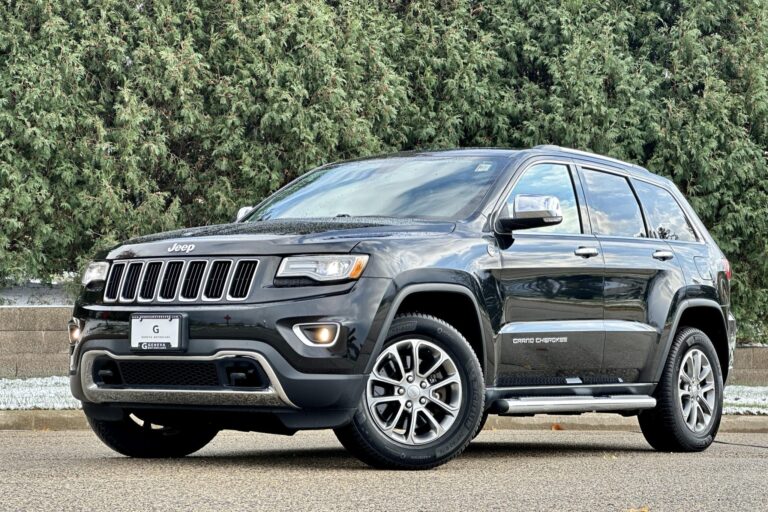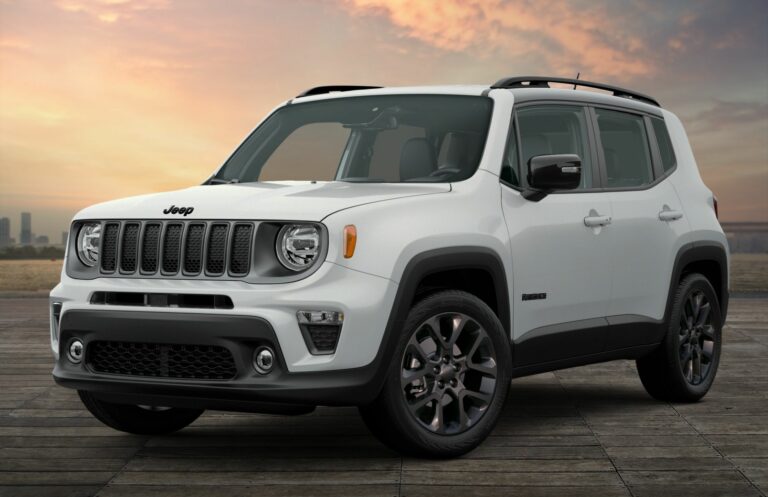How Much Oil Does A 2017 Jeep Wrangler Unlimited Take: A Comprehensive Guide
How Much Oil Does A 2017 Jeep Wrangler Unlimited Take: A Comprehensive Guide jeeps.truckstrend.com
The 2017 Jeep Wrangler Unlimited is more than just a vehicle; it’s an icon of adventure, freedom, and off-road capability. Whether you’re navigating urban jungles or conquering rugged trails, maintaining your Wrangler’s heart – its engine – is paramount. And at the core of engine maintenance lies understanding its lubrication needs, specifically, how much and what type of oil it requires. This comprehensive guide will delve into every aspect of oil for your 2017 Jeep Wrangler Unlimited, ensuring its legendary 3.6L Pentastar V6 engine continues to perform optimally for years to come.
Knowing the correct oil capacity and type isn’t just a recommendation; it’s a critical component of preventative maintenance. Using the wrong amount or type of oil can lead to decreased performance, accelerated wear, and potentially catastrophic engine damage. This article aims to equip you with all the necessary information, from the exact oil quantity to the best practices for oil changes, empowering you to keep your Wrangler roaring.
How Much Oil Does A 2017 Jeep Wrangler Unlimited Take: A Comprehensive Guide
Understanding Your 2017 Jeep Wrangler Unlimited’s Engine
The 2017 Jeep Wrangler Unlimited (JK generation) is predominantly powered by the robust 3.6-liter Pentastar V6 engine. This engine, renowned for its balance of power, efficiency, and reliability, is a staple across many Chrysler, Dodge, and Jeep vehicles. Its design incorporates advanced features like variable valve timing, which demands precise lubrication to function correctly. The engine’s size and internal components directly dictate the specific oil capacity and viscosity required to maintain optimal operating temperatures and reduce friction effectively.
The Crucial Question: How Much Oil Does A 2017 Jeep Wrangler Unlimited Take?
For the 2017 Jeep Wrangler Unlimited equipped with the 3.6L Pentastar V6 engine, the answer is straightforward: it takes 6 quarts (or approximately 5.7 liters) of engine oil when performing an oil and filter change.
It is absolutely crucial to always change the oil filter every time you change the engine oil. The filter traps contaminants and debris, and installing a new filter ensures that the fresh oil remains clean and effective from the start, providing maximum protection to your engine.
Recommended Oil Type and Viscosity for Your Wrangler
Beyond just the quantity, the type and viscosity of oil are equally vital. For the 3.6L Pentastar V6 engine in your 2017 Jeep Wrangler Unlimited, the manufacturer (FCA/Stellantis) strongly recommends the following:
- Viscosity: SAE 5W-20. This weight is specifically formulated to provide optimal lubrication across a wide range of operating temperatures, ensuring easy cold starts and robust protection when the engine is hot.
- Type: Full Synthetic Oil is highly recommended. While some older vehicles might do well with conventional or synthetic blends, modern engines like the Pentastar V6 benefit immensely from the superior protection, stability, and longevity offered by full synthetic oil. Synthetic oils are engineered to withstand higher temperatures, resist breakdown, and provide better sludge prevention, which is crucial for engines with tighter tolerances and advanced components.
- Certification: Look for oils that meet or exceed the API (American Petroleum Institute) SN, SP, or a newer specification. More importantly, ensure the oil meets Chrysler’s specific material standard MS-6395. This certification guarantees the oil has passed rigorous tests set by the manufacturer to ensure compatibility and performance with your engine’s design.

Using an oil that does not meet the MS-6395 specification, even if it’s the correct viscosity, can potentially lead to premature engine wear or issues not covered under warranty. Always check the oil bottle for these specific markings.

Why the Right Oil Capacity and Type Matter: Critical Considerations
Understanding the "why" behind these specifications reinforces their importance:
- Underfilling (Too Little Oil): If your engine has insufficient oil, critical components will not receive adequate lubrication. This leads to increased friction, excessive heat buildup, accelerated wear, and potential catastrophic engine failure. Low oil levels can also cause the oil pump to suck air, leading to a loss of oil pressure and further damage.
- Overfilling (Too Much Oil): While seemingly less harmful, overfilling can be equally detrimental. Excess oil can be whipped into a froth by the crankshaft, leading to aeration. Aerated oil is less effective at lubricating and dissipating heat. It can also increase crankcase pressure, potentially blowing out seals (like crankshaft seals), leading to costly leaks. Furthermore, excess oil can be forced into the PCV (Positive Crankcase Ventilation) system, leading to oil consumption, deposits on spark plugs, and even damage to the catalytic converter.
- Incorrect Viscosity: Using oil that is too thick (e.g., 10W-30 instead of 5W-20) can make cold starts harder, reduce fuel economy, and potentially starve critical components of lubrication, especially when cold. Oil that is too thin (e.g., 0W-10) might not provide adequate protection at high operating temperatures, leading to metal-on-metal contact and wear.
- Incorrect Type (e.g., Conventional vs. Synthetic): Modern engines like the Pentastar V6 are designed with tighter tolerances and often run hotter than older engines. Synthetic oil’s superior thermal stability and lubricating properties are essential for these designs. Using conventional oil where synthetic is recommended can lead to faster oil breakdown, sludge formation, and reduced engine longevity.

Step-by-Step: Changing the Oil in Your 2017 Jeep Wrangler Unlimited (DIY Guide)
Performing an oil change yourself can save money and provide a deeper understanding of your vehicle.
Tools and Materials You’ll Need:
- 6 quarts of SAE 5W-20 Full Synthetic oil (meeting MS-6395 spec)
- New oil filter (Mopar recommended, or equivalent quality)
- Oil filter wrench
- Socket wrench and appropriate socket for the drain plug (usually 13mm)
- Oil drain pan (capacity of at least 7-8 quarts)
- Funnel
- Jack and jack stands, or automotive ramps
- Gloves and safety glasses
- Shop rags or paper towels
- Torque wrench (optional, but recommended for drain plug)
Procedure:
- Preparation: Park your Wrangler on a level surface. For better access, you might need to lift the front end using ramps or a jack and jack stands. If using a jack, ensure the vehicle is stable on jack stands before getting underneath.
- Warm Up Engine (Slightly): Run the engine for a few minutes to warm the oil. Warm oil drains more easily. Do NOT let it get too hot to avoid burns.
- Locate Drain Plug: The oil drain plug is located at the bottom of the oil pan, typically towards the front of the engine, usually on the driver’s side. Place your drain pan directly underneath.
- Drain Oil: Using your socket wrench, carefully loosen and remove the drain plug. Be prepared for the hot oil to flow out quickly. Allow all the oil to drain completely (this can take 10-15 minutes).
- Replace Drain Plug: Once drained, clean the drain plug and the area around the oil pan. Reinstall the drain plug, ensuring it’s snug. If using a torque wrench, tighten to the manufacturer’s specified torque (consult your owner’s manual; typically around 20-25 ft-lbs). Do not overtighten!
- Locate and Remove Oil Filter: On the 3.6L Pentastar V6, the oil filter is a cartridge type, located on top of the engine, near the front, usually under a plastic cap. Use your oil filter wrench to unscrew the cap. Carefully pull out the old filter element. There might be some residual oil, so have rags ready.
- Install New Oil Filter: Lubricate the new O-rings (usually provided with the new filter) with a little fresh oil. Insert the new filter element into the housing, ensuring it seats correctly. Screw the cap back on by hand until snug, then use the wrench to tighten it according to manufacturer specifications (often marked on the cap, usually around 18 ft-lbs).
- Add New Oil: Remove the oil filler cap (usually marked with an oil can symbol) on top of the engine. Place your funnel in the opening and slowly pour in 5 quarts of the recommended 5W-20 full synthetic oil.
- Check Oil Level: Wait a few minutes for the oil to settle. Pull out the dipstick, wipe it clean, reinsert it fully, then pull it out again. Check the oil level. It should be within the "safe" range.
- Top Off: Add the remaining 1 quart of oil gradually, checking the dipstick frequently, until the level is at the "full" mark. Do not overfill.
- Start Engine and Check for Leaks: Start the engine and let it run for a minute or two. Check underneath for any leaks around the drain plug or oil filter.
- Final Oil Level Check: Turn off the engine, wait 5-10 minutes for the oil to settle, and check the dipstick one last time. Adjust if necessary.
- Reset Oil Change Indicator: This is crucial. Consult your owner’s manual for the exact procedure, but typically it involves turning the ignition to "RUN" (without starting the engine), pressing the accelerator pedal to the floor three times within 10 seconds, then turning the ignition off. The "Oil Change Due" light should reset.
- Dispose of Old Oil: Properly dispose of the used oil at a local auto parts store, service station, or recycling center. Never pour it down drains or onto the ground.
Oil Change Intervals: When to Change Your Oil
For the 2017 Jeep Wrangler Unlimited with the 3.6L Pentastar V6 using the recommended full synthetic oil, the typical oil change interval is every 10,000 miles or 12 months, whichever comes first. However, this is a general guideline. Several factors can influence the optimal interval:
- Driving Conditions:
- Severe Duty: Frequent short trips (less than 10 miles), stop-and-go driving, extreme temperatures (very hot or very cold), dusty conditions, off-roading, towing, or extended idling. If you frequently engage in these, consider changing your oil every 5,000-7,500 miles or 6 months.
- Normal Duty: Predominantly highway driving, moderate temperatures, and infrequent heavy loads. In this case, 10,000 miles or 12 months is usually fine.
- Oil Quality: Using a high-quality full synthetic oil that meets the MS-6395 specification allows for longer intervals.
- Vehicle Age/Mileage: As vehicles age, seals and components might not be as tight, and oil consumption might increase slightly. Regular checks become even more important.
Always refer to your vehicle’s owner’s manual for the most accurate and specific recommendations. And remember, regularly checking your oil level between changes (e.g., once a month) is a good habit to catch any potential leaks or consumption issues early.
Common Challenges and Solutions
- Stripped Drain Plug/Oil Pan: This happens from overtightening. Prevention is key (use a torque wrench). If it happens, you might need a new drain plug (oversized or self-tapping) or, in severe cases, a new oil pan.
- Overtightened Oil Filter: Can make removal difficult. Use the correct filter wrench and apply appropriate torque when reinstalling.
- Incorrect Oil Level Readings: Ensure the vehicle is on level ground and allow sufficient time for oil to drain back into the pan before checking the dipstick.
- Oil Leaks: After an oil change, double-check the drain plug and filter for leaks. If persistent, investigate further (e.g., valve cover gaskets, oil cooler).
- Disposal of Used Oil: Never pour old oil down the drain. Most auto parts stores and many service centers accept used oil for recycling.
Practical Advice and Actionable Insights
- Consult Your Owner’s Manual: This is your definitive source for all specifications and procedures.
- Don’t Skip Oil Changes: This is the single most important maintenance item for engine longevity.
- Use Quality Products: Invest in a good quality full synthetic oil that meets the MS-6395 standard and a reputable oil filter. Cheap oil and filters are false economy.
- Regularly Check Oil Levels: Make it a habit to check your oil level monthly, even if your oil change interval is long.
- Keep Records: Maintain a log of your oil changes, including date, mileage, and oil type used. This is useful for warranty claims and resale value.
Oil Change Specifications and Estimated Costs for 2017 Jeep Wrangler Unlimited (3.6L Pentastar V6)
Here’s a breakdown of the key information and estimated costs for an oil change. Prices are approximate and can vary based on brand, location, and retailer.
| Item | Specification/Quantity | Approximate Cost (DIY) | Approximate Cost (Professional Service) | Notes |
|---|---|---|---|---|
| Engine Oil | 6 Quarts SAE 5W-20 Full Synthetic, API SN/SP, MS-6395 certified | $7 – $12 per quart ($42 – $72 total) | Included in service fee | Look for brands like Pennzoil Platinum, Mobil 1, Valvoline SynPower, etc. |
| Oil Filter | Cartridge Type, Mopar or equivalent quality (e.g., Fram, Wix, K&N) | $8 – $20 | Included in service fee | Always replace with every oil change. |
| Labor (Professional Service) | N/A | N/A | $40 – $80+ (varies widely) | For those who prefer not to DIY. |
| Total Estimated Cost (DIY) | Oil + Filter | $50 – $92 | N/A | Plus tools if you don’t already own them. |
| Total Estimated Cost (Professional) | Oil + Filter + Labor | N/A | $80 – $150+ | Prices can vary significantly by dealership vs. independent shop. |
Note: Prices are estimates and subject to change.
Frequently Asked Questions (FAQ)
Q1: Can I use a different oil viscosity, like 5W-30, in my 2017 Jeep Wrangler Unlimited?
A1: While 5W-30 might be acceptable in some extreme climates, the manufacturer specifically recommends SAE 5W-20 for optimal performance and fuel economy. Sticking to 5W-20 is best unless explicitly advised otherwise by your owner’s manual for specific conditions.
Q2: How often should I check my oil level?
A2: It’s a good practice to check your oil level at least once a month, or before long trips. This helps you monitor for any leaks or oil consumption issues between scheduled oil changes.
Q3: What happens if I put too much oil in my Wrangler?
A3: Overfilling can lead to aeration (foaming) of the oil, reduced lubrication effectiveness, increased crankcase pressure that can damage seals, and potentially harm the catalytic converter. If significantly overfilled, it’s best to drain the excess.
Q4: What happens if I don’t change my oil on time?
A4: Neglecting oil changes leads to oil breakdown, sludge formation, reduced lubrication, increased engine wear, decreased fuel economy, and can eventually cause serious engine damage requiring expensive repairs or replacement.
Q5: Is synthetic oil really necessary for my 2017 Wrangler’s Pentastar engine?
A5: Yes, full synthetic oil is highly recommended and practically necessary. Modern engines like the Pentastar V6 benefit greatly from synthetic oil’s superior stability, resistance to breakdown, and lubricating properties, which are crucial for components like variable valve timing.
Q6: Do I need to change the oil filter every time I change the oil?
A6: Absolutely. The oil filter traps contaminants. Installing a new filter with fresh oil ensures that the new oil remains clean and effective from day one, maximizing engine protection.
Q7: Where are the oil drain plug and filter located on a 2017 Wrangler?
A7: The oil drain plug is at the bottom of the oil pan, typically on the driver’s side towards the front of the engine. The oil filter (cartridge type) is located on top of the engine, usually near the front, under a plastic cap.
Conclusion
The 2017 Jeep Wrangler Unlimited is built for adventure, and its heart, the 3.6L Pentastar V6, deserves the best care to keep those adventures going strong. Knowing that it takes 6 quarts of SAE 5W-20 full synthetic oil (meeting the MS-6395 specification) and diligently following recommended oil change intervals are fundamental to its longevity and performance.
Whether you choose to tackle the oil change yourself or rely on a trusted professional, prioritizing this essential maintenance will protect your investment, enhance your Wrangler’s reliability, and ensure you continue to enjoy the unparalleled freedom only a Jeep can offer, mile after exhilarating mile. Proper lubrication is the lifeblood of your engine; treat it with the respect it deserves, and your Wrangler will reward you with years of faithful service.






